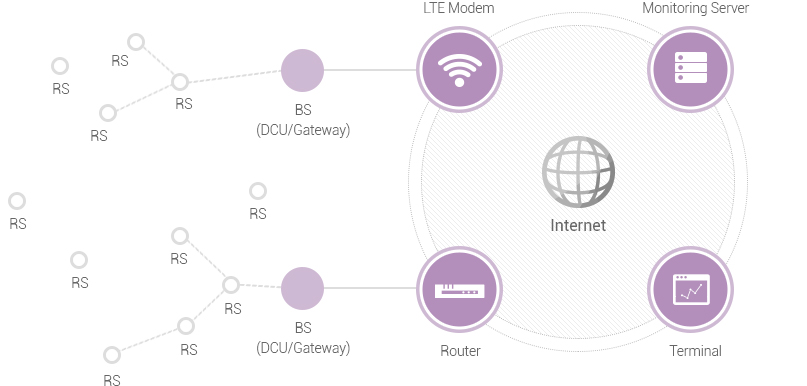Wireless Network
arkLABS offers the best communication equipments,
through in-depth consulting and cell design.

SOLUTIONS
Introduction
Mesh refers to a geographic communication pattern that looks like a fishing net made from kots and links.
In a typical wireless mesh network, the knots are meter sites and the links are the radio paths between the meter site and a DCU.
Using mesh communications technology, any knot in the communications chain can link to any other knot and
it is up to the network to calculate an optimum path by hopping from meter to meter until the radio message eventually
reaches a concentrator.
arkMesh is composed of BS (Base Station), RSs (Relay Stations) and/or SNs (Sensor Nodes).
arkMesh is N:m (m< N) full mesh optimized for the industrial IoT applications with 900MHz RF solutions.
It can also cover the radio frequency from 400Mhz to 2.4GHz.
Features
1
2.4GHz vs. 900MHz- · 2.4GHz RF is used by Wifi, Bluetooth and ZigBee
- · 2.4GHz RF is sometimes at trouble for industrial usage due to weak diffraction and transmissivity from its high
frequency - · 900MHz RF is a trade-off solution between air rate and coverage
2
arkMesh network- · Minimal network management
- · Self-configurable, self-curable and reliable network
- · ZigBee Mesh Pro is N:N Full Mesh, too heavy. N:m (m<N) is good for most industrial IoT application.
arkMesh is N:m, therefore lighter, more flexible and more reliable.
3
Frequency vs. coverage vs. air rate
900MHz arkMesh Network Configuration.

- Most IoT application is not demanding N:N full mesh
- - AMI, street light control, sensor networks, LBS(location based service) , etc.
- N:1 mesh suffices for most IoT applications - arkMesh provides N:m full mesh network good enough for most IoT applications
BS: Base Station
RS: Relay Station
DCU : Data Concentrator Unit
